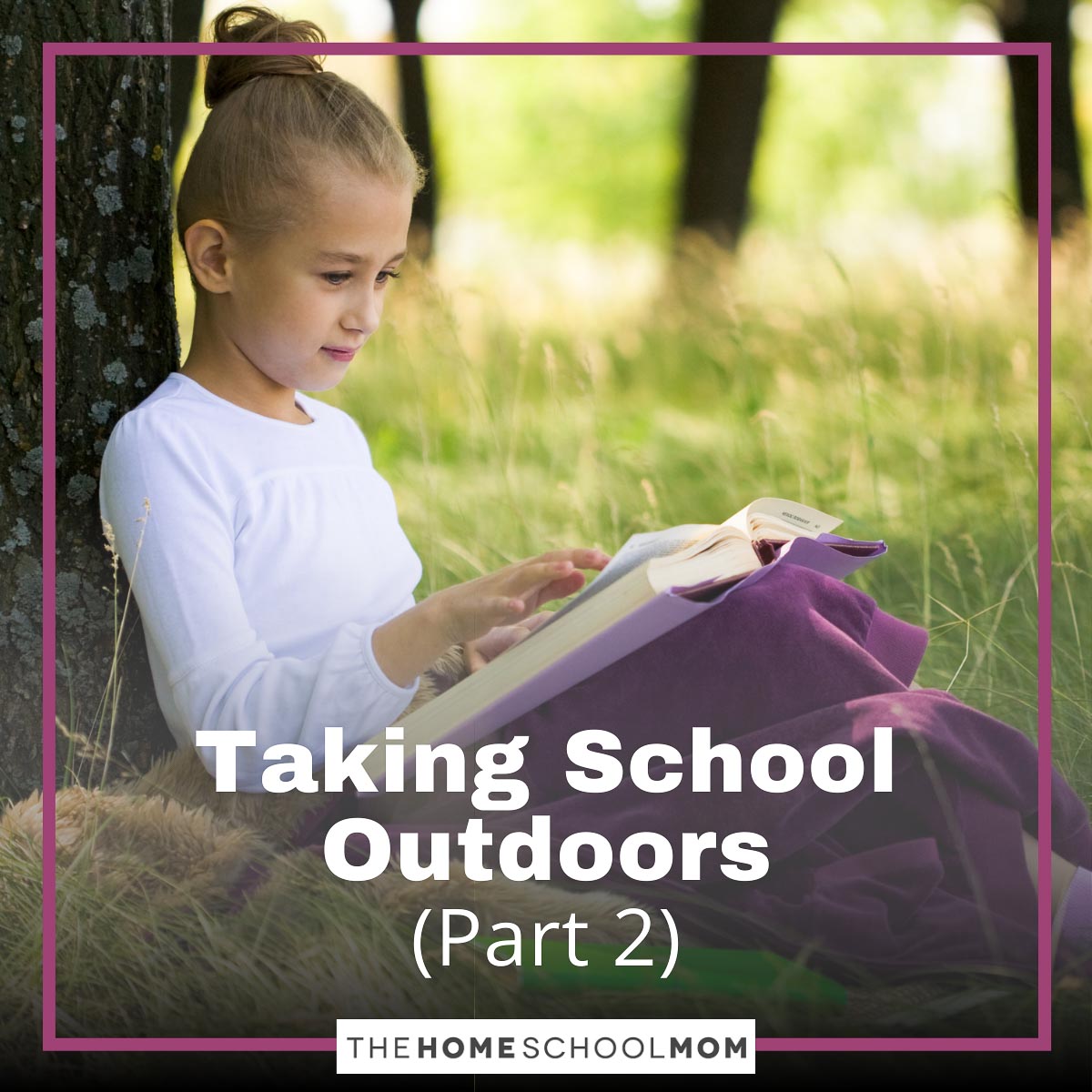Taking School Outdoors, Part 1
Let’s see…schoolwork sitting at a desk or table, relaxing on the couch in the living room, or lying down on a comfy blanket spread out in the shade under a tree? Fortunately, homeschoolers don’t have to choose!

Doing school outdoors is one of the many benefits of home education, which has benefits that are physical, emotional, and educational.
Consider, for example, a study by The American Institutes for Research for the California Department of Education, which found that at-risk students who participated in week-long outdoor education programs demonstrated a significant increase in self-esteem, cooperation and conflict resolution, problem-solving, motivation to learn, classroom behavior, and even mastery of science concepts (American Institutes for Research, 2005).
Spending time in nature, through simple enjoyment and study, can be a wonderful way to make schoolwork fun and enjoyable.
The first article in this series provided a number of suggestions for ways to “do school” outside, and make the most of the beautiful spring weather. Here are some additional ideas for taking academics past the confines of the house walls:
- Read aloud outside under a tree. This is especially effective if the child does not prefer to read. Sometimes simply changing the location can help a child be more motivated to do work he/she does not normally want to do. After all, who can resist curling up with a good book in the shade on a warm, beautiful day?
- Go over spelling words outdoors. Andrew Pudewa, Director of the Institute for Excellence in Writing, explains that brain cells make connections through frequency, intensity, and duration. By going over spelling words in a creative place, it increases the intensity of that experience and can enhance learning.
- Take the kids to a local creek. Investigate the flora and fauna under a magnifying glass. Have children record their observations and create a journal of what they find.
- Set up a birdfeeder. Have children observe, identify and draw the different types of birds that eat at the feeder. Kids can get started birding with these tips. Try to identify birds by song.
- Lie in the grass and observe the weather. Look up at the clouds, read the temperature, feel the wind, and note the humidity. Track the weather for one week and record the results on a chart. Check out some weather lesson plans or visit The Weather Channel or the National Weather Service for more weather resources.
- Go camping. Why not take homeschooling on the road? Camping is a wonderful way to make learning come alive and to let kids experience what they are learning. Try these great ideas for how to make camping fun and educational!
- Build a fort. Kids love to construct their own special hideouts. Have children plan their forts and construct them by themselves, using sticks, moss, bushes, twine, blankets, cardboard, and anything else they might be able to find useful. This teaches creativity, planning, and engineering skills, and is just plain fun!
- Go on a photographic scavenger hunt. Give children a camera and have them take pictures of different items that relate to something you are studying. Give them a list of the items they must capture, and give a prize if they are able to get a photo of all of the items on the list! This exercise builds observation skills as well as photographic skills.
- Play basketball Math. Have children stand in front of a basketball hoop, and call out a Math fact, such as 3+6. The child then bounces the ball the number of times for the answer (9), comes up to the basket, shouts out the answer, and shoots.




 Rebecca Capuano holds a Master of Social Work degree from East Carolina University and is the stay-at-home mom of three children (one of whom is in heaven). She also makes attempts at being a homeschooler, writer, photographer, scrapbooker, and truth-seeker. She has worked in a variety of capacities (including group homes, day treatment centers, and public schools) with at-risk children and staff, including developing a therapeutic and educational day treatment center for delinquent youth in Wilmington, North Carolina. She currently resides in Virginia. Rebecca believes that family is created by God as the most fundamental institution in society, and she is dedicated to helping families nurture their children to become responsible persons of character and integrity.
Rebecca Capuano holds a Master of Social Work degree from East Carolina University and is the stay-at-home mom of three children (one of whom is in heaven). She also makes attempts at being a homeschooler, writer, photographer, scrapbooker, and truth-seeker. She has worked in a variety of capacities (including group homes, day treatment centers, and public schools) with at-risk children and staff, including developing a therapeutic and educational day treatment center for delinquent youth in Wilmington, North Carolina. She currently resides in Virginia. Rebecca believes that family is created by God as the most fundamental institution in society, and she is dedicated to helping families nurture their children to become responsible persons of character and integrity.
Good ideas. Thanks for sharing.